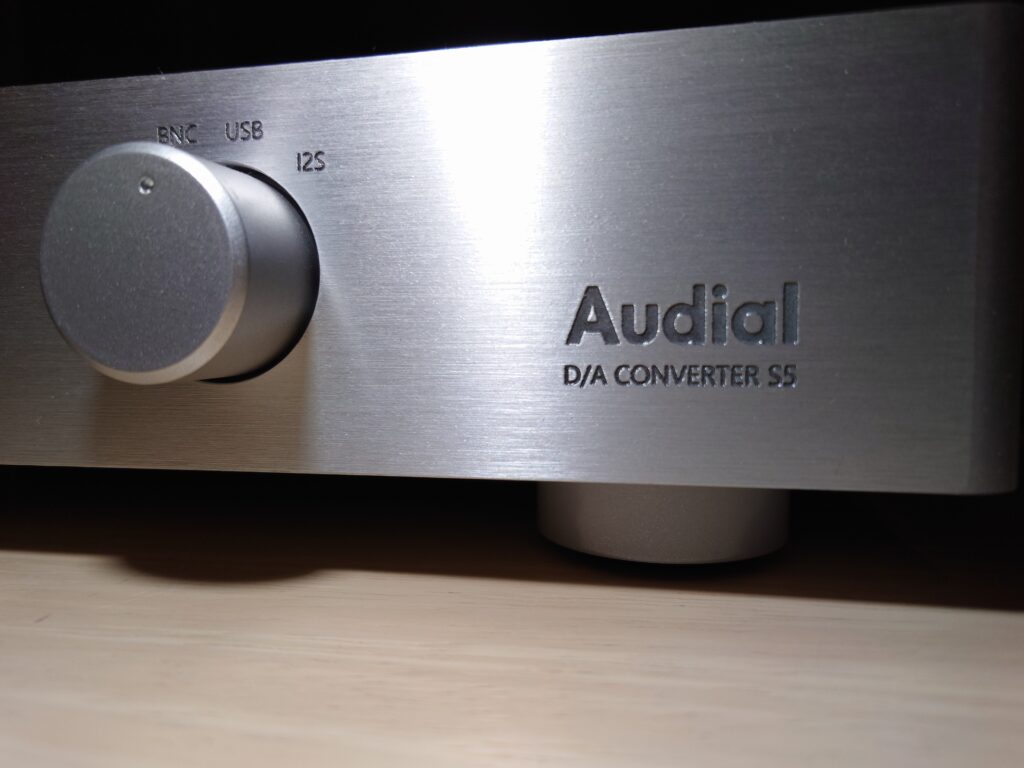It’s been a hot minute since I’ve talked about Audial and their D/A Converters. In fact, I’d say this review is long overdue. I had so quickly accepted the Audial S5 as my new reference that the notion of writing something about it quickly vanished as I turned my gaze elsewhere.
As mentioned before, the idea that “reference level” performance can be attained using a part that was produced more than 30 years ago is mind boggling. Needless to say, there have been a lot of innovations in that area since then.
D/A Converters are one of those topics that
Let’s get cracking
(Re)Introducing the TDA1541
As in their S4, the S5 uses the venerable Philips TDA1541. I’m not alone in considering it to be one of the precursors to all modern converters. I won’t go into too much detail about the inner workings, because the fine fellows over at DutchAudioClassics already have a great article explaining things.
The major point to make though is that this is not a delta-sigma chip, like everything modern. Nope, it’s tried and true multi-bit. Like all chips back then, it was expensive to produce (at the time) and they ran hot. As such, it’s never been a recommendation to leave them powered 24/7 but instead save that for when you’re doing the actual listening.
1541 vs Delta-Sigma
There’s a very good reason I keep on coming back to this chip, even after having technically perfect converters from the likes of SMSL and Topping in my system. Please, allow me to go into more detail.
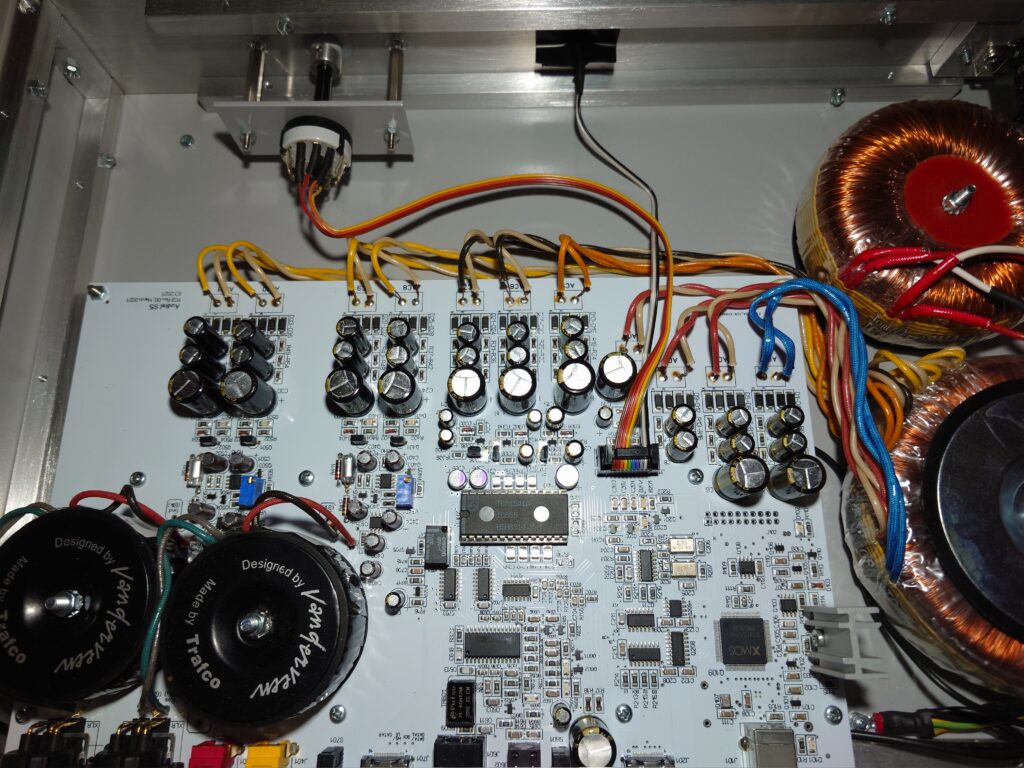
Let me start by saying there isn’t anything wrong with the offerings from the companies I just listed. I still have and use multiple models from Topping and quite enjoy them, especially for their compact size. But, their converters have never lasted more than a few weeks in my reference systems. I’ve pondered on many an occasion and often for far longer than should be allowed.
It seems so inverted, since measurements tell me that I needn’t seek more. Call it bias or my mind playing tricks on me or that there actually is an audible difference. Any of these statements may be true. What I do know is that a TDA1541 touting converter will never leave my system. Unless it was for another multi-bit system perhaps.
Okay, that was enough of a tangent I guess. Let’s get back to the task at hand. If I’m comparing this monolithic chip to its more modern brethren, then I would be remiss for skipping measurements.
For all intents and purposes, the TDA1541 measures just at the limits of what could be perceived by human ears,
Back to S5’s Reality
Everything above, while important, isn’t really why we’re here today. I like to geek out and learn what makes something work the way it does – it’s not enough for me to have someone say this is better than that. I even picked up electrical engineering so I could design my own tube amplifier for no other reason than to learn.
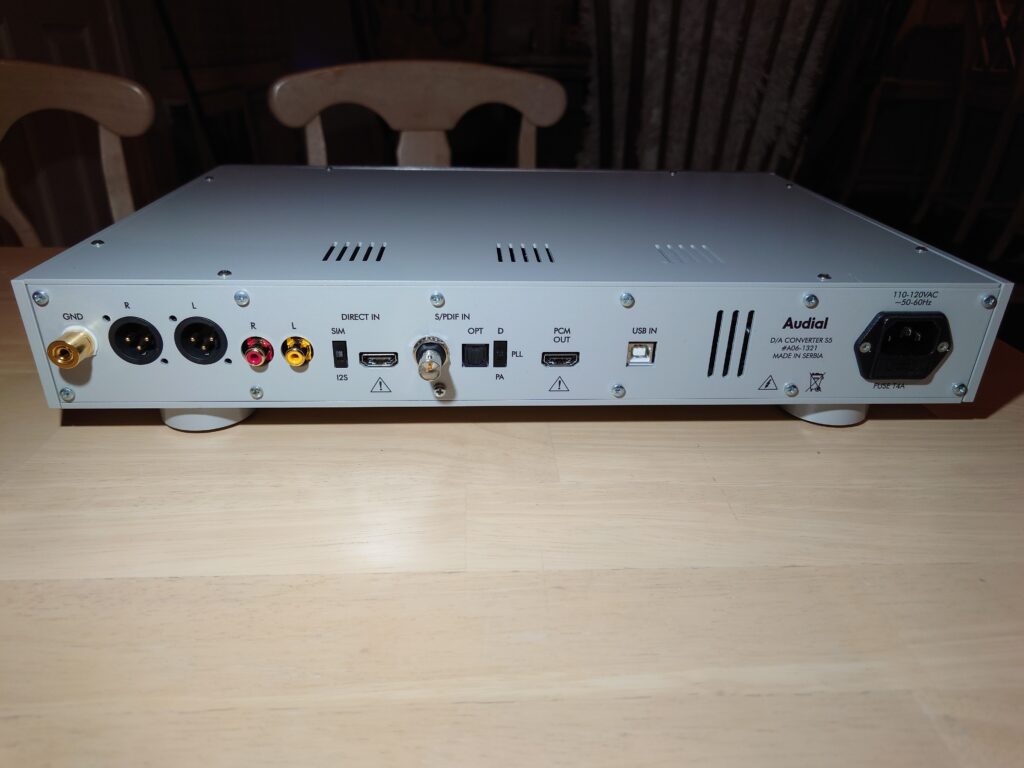
But anyways, let’s get back to the matter at hand – the Audial S5.
I think Pedja over at Audial would consider the S5 a small update over the S4, more of an evolution if you will. At a high level, I can understand why as the S5 represents small refinements to power delivery/filtering, digital inputs, and master clocks. All of these individually may not have been enough for an update, but it’s often said that the whole is greater than the sum of its parts.
Taking a look at the back (and front) it isn’t hard to notice the differences externally. Whereas the S4 only accepted USB or BNC, the S5 also has inputs for optical or I2S. Don’t worry, I also had to look up the I2S specification and how Pedja was using it. In this case, it’s for multi-channel audio and allows the connection of two S5’s to handle 4-channel audio. Pretty cool! Though definitely not for everyone.
Just like the S4, the S5 can be upgraded with transformer balanced outputs. In my S4, I opted for this to use RCA instead of the XLR in the S5. Part of me wishes I could have both, but that’s a minor quibble.
The biggest upgrade in my opinion is the front-mounted power button. It’s so nice not having to reach around the back to power off the unit. Which probably leads to a big question for most audio enthusiasts. Why turn off the D/A Converter? Pretty simple really, the TDA1541, being a monolithic chip, gobbles down power in comparison to its Delta-Sigma brethren. It can get quite hot… and while that may truly pose no threat to the chip, I prefer to “play it safe” and try to not keep the S5 on for days at a time.
I’ve long wondered about attaching a block of copper with a thermal pad to keep things cool, but I’d first have to check the manual for expected operating temperatures before any DIY work. That’s for another discussion perhaps
The System
I would be lying if I said the system wasn’t (read was not) in flux during the initial honeymoon with the S5. Indeed, there were a lot of components that made their way into my living room before I landed on an eventual system for the remainder of the review. For example, the amplification saw the likes of my Rega Osiris, Audial’s Model A, and Triode Lab’s Au Pre Hi-Game and EL84M-FFX monoblocks. In addition, there were brief stints by Rega’s Elicit MK3 (and MK5) integrateds as well as Quad’s Vena II.
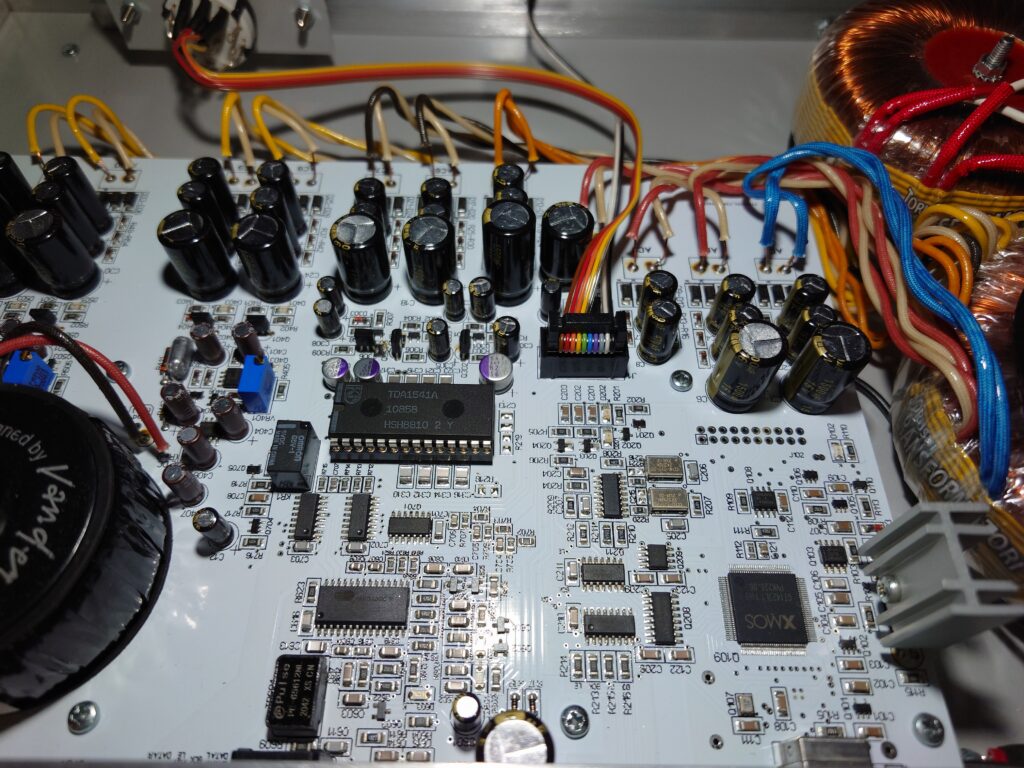
Going on a bit of a tangent, the Triode Lab pieces are always a treat to bring out. I haven’t had much chance to talk about them, but they are by far the best tube electronics I have ever heard. I’ll have to make a better effort to talk about them in 2023.
I eventually settled on the Luxman SQ-N150 integrated for the amplification. At a really high level, it was largely driven by logistics. I was about to have a surgery and didn’t want to get up to change the volume – the Triode Lab pre-amp doesn’t have a motorized potentiometer.
Anyways, on the speaker side of things are a pair of Rega RS7’s. Yes, they’re a bit long in the tooth at this point but that doesn’t matter. They produce some of the most engaging music and are the reason I eventually upgraded to the big brother and Rega’s Flagship Floorstanders, the RS10.
Obviously, we have the Audial S5 on the digital side and my trusty Rega RP10 on the analog side.
As a bonus, I have the S4 hooked up to a separate input on the Luxman. I would say I had to use DSP to volume match the two units, but their output voltages were nearly identical!
Sound
First, a shameless copy from my S4 review. Don’t fret though as I feel it is fully justified, especially when talking about digital audio components.
Before talking about the sound of a DAC, I feel the need to explain (more here) my internal conflict about DAC transparency versus my feelings on how it sounds. As an engineer, I fully acknowledge and believe in measurements. In fact, I regularly seek out measurements to enhance gear that I review. My main conflict, though, also comes from said measurements. They tell me that this S4 should be sufficiently “transparent”, or rather it shouldn’t make a single difference to the sound of the speakers. My experiences though tend to tell a different story. What do I believe? The measurements or my ears? While I believe this to be one of the best parts of being in the audio hobby, it’s definitely a point of contention for some.
Now back to the review.
I’m going to listen to the same albums as last time and compare my (hand written) notes as well as do my best to switch between the S4 and S5 with the assistance of my better half.
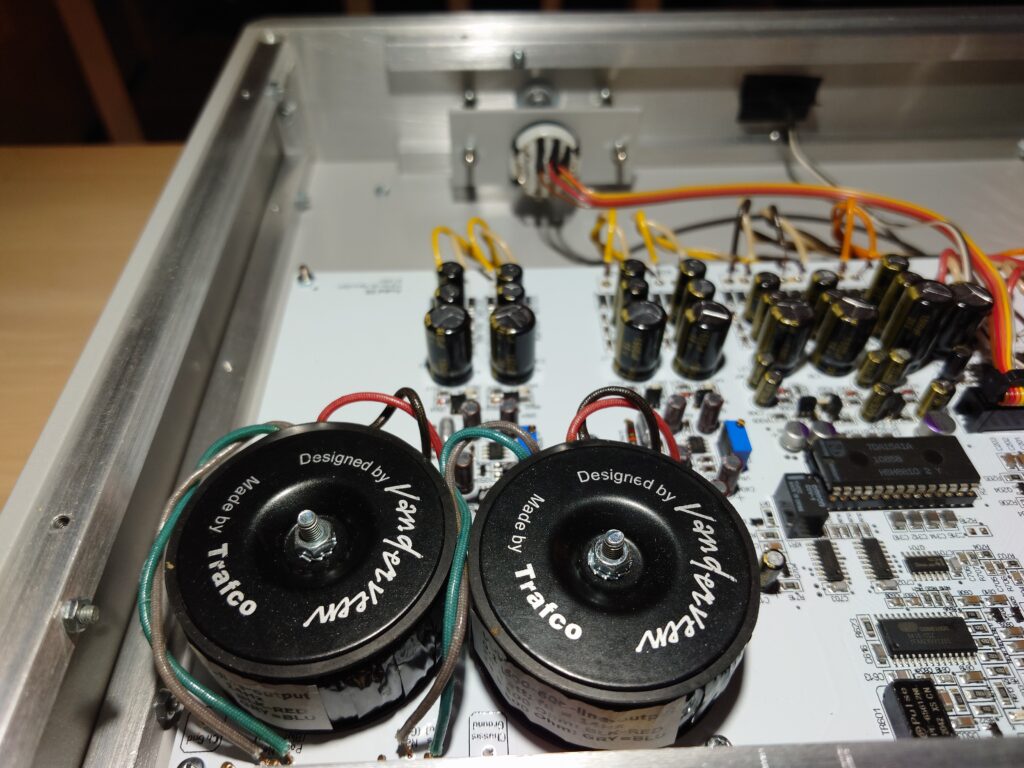
The first thing that stands out between the two for me is that the S5 appears to sound ever so slightly forward. Not in a bad way though. And it very well could be a lower noise floor or greater separation between channels that is communicating that same effect.
It was just that though – if I closed my eyes, I couldn’t shake the sensation that the instruments and vocalists were further into my room than with the S4. The sound-stage was easily as wide (if not a smidgen more).
Just like the S4, the S5 excels at vocals. I didn’t notice that much of a difference between the two in the male vocal region. Still magic. the TDA1541 was truly made for vocals.
Notice though that I say male vocals. Female vocals – it’s hard to put into words exactly why I preferred the S5. But I’ll do my best. To test, I switched over to “Life Goes On” by Azedia. It isn’t a super well known artist or album, but one that I’ve come to enjoy over the years.
Okay, I’ll be real here. My eyes were closed the entire time. The change is slight, but there is a very modest veil that seems to have been lifted from female vocals that I would not have known were there had it not been for the S5.
Is the S4 broken? No, absolutely not. But Pedja worked some kind of magic because the S5 paints an even clearer picture for me in comparison.
Talking bass extension and highs really quick, I think the two are quite similar in the lows. The definition down low is indistinguishable between the two for me. The highs are pretty similar, but again the slight forward’ness of the S5 (in comparison to the S4) changes the presentation. I prefer it, but that’s just me.
And before you go asking questions. Let me close with this. If I didn’t have both the S4 and S5 right next to each other, I am 100% confident that I would not be able to tell you what was different with the S5 vs S4. It truly required switching to and fro for the changes to become apparent and easy to pick out.
From a High Level
At the end of the day, the S5 is still the reference for me. It has supplanted the S4 for various reasons, a lot of which is related to its quality-of-life improvements over the S4. With that said though, let’s talk about it on a whole.
If I had to describe the S5 in any single term, it would be sublime. The time I’ve spent with the S5 has shown me that it’s hard to improve on something that was already close to perfect.
For those that are wondering… would I upgrade from the S4 to the S5? To that, I say “it depends”. It’s not even down to a “this is better than that”, but more along the lines of choosing two different versions of the same beverage. The S5 was more true-to-life in a sense, but unless you had the two units side-by-side, it’d be impossible to tell from memory.
In Conclusion
Well…. what else to say other than “that was a thing”.
Truly though, the S5 is a marvel of engineering and brings some understated but much appreciated improvements in the quality-of-life department compared to the S4. Those are the biggest winners for me.
Sound-wise, they’re pretty close at the end of the day. They only really started to diverge when looking at female vocals and above. Instead of calling it more “forward”, perhaps the more correct verbiage would be more correct compared to a live performance.
I spent a lot of time after writing my notes (but before finishing this review) listening to one of my favorite artists, Doug Burr. I have heard him in person many many times and and thus pretty familiar with what he sounds like live.
For sure, the older S4 did great here and I would be surprised by any complaints anyone could bring forward. The S5 though, elevated the performance by making the vocals and guitar-work just more believable.
I’m thrilled to have it in my system and am looking forward to further improvements by Pedja.
For the curious, you can find it for sale here.

